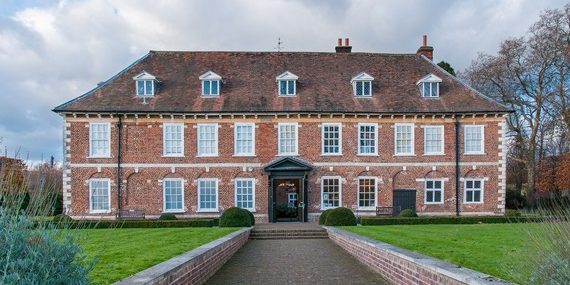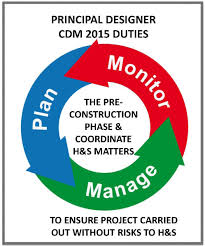Look around you in Bexley Village and the first thing you will spot will likely be St Mary’s Church. Similarly, wander up towards Bexleyheath and you can’t miss Danson House and Stables – a Grade I listed Georgian mansion. Around it, a variety of architectural styles runs the gamut of design. Across the borough, the architecture in Bexley is such that it tells the story of how design has evolved over the centuries – from Georgian, Victorian and Edwardian to the heights of Art Deco and the latest modern styles.
Living in Bexley offers a variety of options when it comes to choosing an architectural style. If you are looking for a new home, need more space, or want to breathe new life into an older, more tired-looking building, we explore the main architectural styles found in the borough to uncover the beauty and defining features for each, giving you the tools to design your ideal home.
Georgian architecture in Bexley
Georgian architecture strictly dates between 1696 and 1851 and, while you may not realise it, it is one of the most striking architectural styles not just in Bexley, but around London.
At around three to four storeys high, Georgian buildings had no private gardens. Instead, houses were built around garden squares, offering residents an option for some green space and a breath of fresh air outside their home.
Most homes would have had a white or cream render. Whereas the earlier designs would have only rendered the first two floors leaving the remaining floors with exposed brickwork, later Regency styles were fully rendered, giving them an added elegance. Sash windows with small panes are another Georgian design feature.
There is one unique feature to early Georgian architecture, though, which defines it from all others. The introduction of a window tax in 1696 saw people being asked to pay a tax depending on the number of windows in their home. Pretty soon, they began to brick up windows to reduce the amount they had to pay. The tax was eventually repealed, but you can still spot the bricked-up window arches in some buildings!
Danson House is a Grade I listed Georgian mansion dating to the mid-18th century and undoubtedly one of the borough’s most beautiful buildings. Restored by English Heritage and managed by the London Borough of Bexley, it now houses the council’s registry office. It is still open to the public as a heritage attraction.
Did you know?
Buckingham Palace was designed by John Nash in 1703, originally as a townhouse for Duke of Buckingham, making it a Georgian building. It was later expanded, and Queen Victoria made it her London residence in 1837.
Art Deco and retro styles
Art Deco is a combination of many different styles, but it is most often recognised by its long lines and curves. Retro is mostly associated with the architecture of the 1930s, which saw a housing boom despite the prevailing tough economic conditions.
Gaze across the boating pool at Danson Park and you will see the curved angles of the Art Deco buildings along Danson Road peaking above the water. Whitewashed buildings, reinforced concrete and facades clear of decoration defined a new age of building design. When it came to commercial buildings the retro style brought rich façades full of angular columns and bright lights, often associated with theatres and cinemas.
There may be centuries of design between Georgian and Art Deco architecture, but there are parallels between them – notably the opulence and grandeur that both styles are often associated with. The prosperity that defined architecture from the early 1920s gave way to the subdued and muted styles of the 1930s, better known as Art Deco and retro.
Those more muted designs saw the wide use of pebbledash rendering on semi-detached suburban houses, a style still seen today around Bexley Village. To distinguish private from council homes bay windows were common on the former. Front doors boasted large glass windows at the top with brass knockers beginning to make an appearance.
Mock-Tudor homes became the norm and were popular among those looking to get onto the property ladder. The rise in home ownership also saw an increase in the number of flats and apartments.
While they may only be found in pockets around Bexley, Art Deco and retro architecture are styles that are instantly recognisable, eliciting feelings of nostalgia.
Did you know?
Around 2 million homes were destroyed during the Blitz, many of them retro-style buildings, which is why there are few that survive in London today.
Victorian architecture in Bexley
Queen Victoria brought in a new design style of that has come to dominate parts of London, including being another of the main architectural styles in Bexley. Victorian designs included new types of materials and the introduction of terraced and semi-detached homes as more and more properties were built to house people moving to the city.
Find out more about Victorian architecture and how it brought in new construction techniques and styles.
Edwardian architecture in Bexley
Edwardian homes are most often found in the suburbs, as the prolific building during the Victorian era left little room in the city. Privacy became more important and properties were set back from the road with front gardens springing up. Bexley still boasts a significant number of Edwardian houses which help to characterise the architectural style in the borough.
Learn more about Edwardian architecture and how it is linked to some of the most famous buildings in the borough.
Marrying the modern with the traditional
Current trends may favour modern interior designs but that does not have to be at the expense of traditional exteriors. Extensions and conversions are popular, and we are seeing more and more clients looking to add more space in their homes.
Whatever your home’s architectural style is, combining a modern design with a traditional aesthetic is about getting the material look and feel right, something that we have been doing for 25 years.
Let’s talk about designing your home
Why not talk to us about how you can extend or convert your home, or browse our case studies to see some of our work?
Ask us anything about architecture and building consultancy.
We’re ready to advise.






